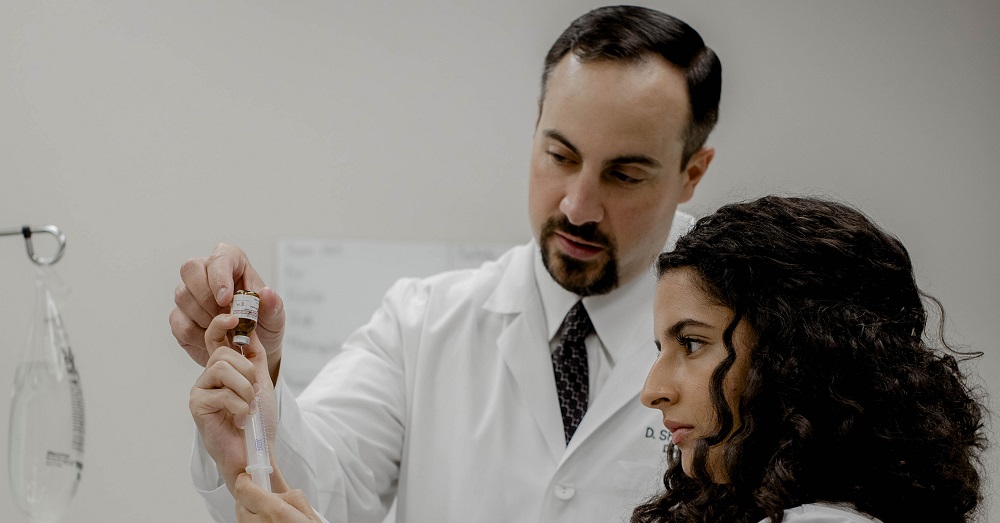Paving a Smoother Path to Manuscript Publication
TTUHSC’s West Texas Journal of Medicine Provides a New Space for Peer-Reviewed Research

Shane Harper, DMS, PA-C
Shane Harper, DMS, PA-C, knows how difficult it is to launch a medical research journal and get it into the orbit of the scientific community. In 2022 he became the founding editor-in-chief for the West Texas Journal of Medicine, which published its inaugural issue in December.
By establishing a medical research publication, Harper and the journal’s editorial board seek to provide an online publication that distributes original medical and health sciences-related research in a forum free of common predatory publication practices to a variety of multidisciplinary providers. In doing so, they hope to create a credible resource for understanding and improving health care in the region and providing West Texas educators, scientists and clinicians with a venue to publish their scholarship.
In addition to Harper, the board includes Maegan Whitworth, Pharm.D., (founding senior associate editor), Ariel P. Santos, M.D., MPH, (surgery editor) and Todd Bell, M.D., (pediatrics editor) from Texas Tech University Health Sciences Center (TTUHSC); Niambi Horton, D.O., Pharm.D., (medicine editor) from the University of Alabama; Neely C. Hudson, Pharm.D., (pharmacotherapy editor) from Augusta University Health; Rachel Hudson, Ph.D., (basic sciences) from the University of Utah; and Candace Herrera, R.D., L.D., (nutrition editor) from Duke University.
Harper said the efforts of TTUHSC School of Medicine Lead Analyst Debbie Trammel, who serves as the journal’s manager, and TTUHSC medical students Robyn Tapp and Elizabeth Eichman also have been instrumental in the journal’s launch and ongoing success.
For Harper, a clinical associate professor in the TTUHSC School of Medicine Department of Surgery, starting the journal addressed a need rather than a want. That need was reinforced when he and Whitworth, an assistant professor of pharmacy practice for the TTUHSC Jerry H. Hodge School of Pharmacy, attempted to have a study published.

Shane Harper, DMS, PA-C,
“Dr. Whitworth and I completed what we thought was a very nice study and submitted it to (a specific, well-respected journal),” Harper recalled. “They said, ‘Hey, we love it, but we think it would be better suited for our sister publication.’ That publication then looked at it said, ‘We love it; it’s a great study, but we need $2,500 to publish it.’ I’m in academic medicine and I get $4,000 a year to spend on continuing medical education, so that's not feasible.”
The outcome left Harper and Whitworth puzzled, frustrated and upset because they believed they had a solid manuscript to publish. And though both journals that reviewed it agreed, the manuscript languished on Harper’s hard drive. He and Whitworth eventually decided that if they couldn’t get their research published through other journals, they would publish it on their own.
“It was a need we thought could also benefit the campus, TTUHSC and Texas Tech as a whole,” Harper explained. “So, we decided we could start our own journal, and we wanted to make it multidisciplinary by opening it up to everybody. It’s not just open to medicine, but to everybody — nursing, pharmacy, health professions — even to the point that I'm trying to convince the (Texas Tech University) School of Veterinary Medicine to have a section within the journal.”
Twenty years ago, most journals accepted and published peer-reviewed research without charging the scientist or institution, relying instead on subscriptions and advertising to cover their costs. Today, almost nobody subscribes, and if they do, they no longer receive an actual printed journal. Instead, journals have almost exclusively become online publications, which eliminated the revenue produced by subscriptions, but also significantly cut the costs of producing a journal. This created what some call predatory publications that will publish almost anything for the right price, which typically ranges from a few hundred dollars to several thousand.
“We've always said the journal does take some financial means to keep going,” Harper acknowledged. “We have to pay for the journal platform every year, but we've been lucky enough that they'll do our storage for us; we don't have to pay for a server or anything like that. We’re also doing copy editing ourselves right now, but that would be nice to outsource. Those are all little things that add up.”

West Texas Journal of Medicine
However, thanks to some funding provided by TTUHSC President Lori Rice-Spearman’s office, having an article accepted for publication by the West Texas Journal of Medicine will be cost-free for researchers inside the Texas Tech University System.
“The thought has always been if you're within the Tech system, we're going to work with you for free,” Harper said. “Outside of Tech, we haven't done so yet, but we want to charge a nominal fee. Not thousands of dollars — no one is trying to retire off the journal — but maybe something like $150 to $250 just to cover basic costs. I love the support and generosity from Dr. Rice-Spearman, but I don't want to go to her every year and say, ‘Hey, can we borrow X amount of dollars again?’”
Keeping costs low and charging nominal fees only when necessary should improve the quantity of submissions, but Harper said the editorial board will focus on quality rather than quantity. For instance, their first issue, named the Genesis issue, received 18 submissions, though only five were ultimately accepted for publication.
“We had some decent studies that the editorial board just didn’t like, mostly because the study either wasn’t considered to be statistically significant, or because too much had already been published in that realm,” Harper said. “The West Texas Journal of Medicine is not a turnstile where you give it to us and we'll put it out there for you. We’ve got a very strong editorial board.”
Having five strong studies in their first issue also allowed the journal to earn its International Standard Serial Number (ISSN). The ISSN is a unique eight-digit number used to identify serial publications such as magazines and journals.
“To get your ISSN, you have to have your website, you have to publish the first volume and that first volume has to have at least five studies,” Harper explained. “We had to publish five that we liked, then the Library of Congress reviewed it and they said, ‘Okay, we think you're legit, so we'll give you an ISSN.’”
As they work to publish their second issue, Harper and the journal’s editorial board remain focused on its goals. And with the first issue already out there, university faculty are taking notice. The buzz has started to reach Harper’s inbox, and he frequently receives general email inquiries about the journal. The number of articles submitted for publication also has noticeably increased.
“The faculty have been super excited about it, especially the chairs, because they understand how hard it is to get published now,” Harper said. “For our second issue, we've already received a very nice article that probably should be a book chapter, and there's a couple more that are really very nice papers.”
The journal also will include an image challenge section that will consist of unusual or weird X-rays, CT scans and other images. The reader will be provided an image and a short synopsis. After evaluating the image, the reader is asked to describe what they think they are seeing before being provided an explanation. It’s part of Harper’s quest to make the journal the best it can be.
“We don't want it to be people's last resort,” Harper stressed. “Getting on PubMed, having a strong impact factor and all the other things that a typical journal strives to do, we, of course, want to strive to do also. But being a smaller journal, and being what a lot of people will consider a regional journal means those are all going to be difficult obstacles for us to overcome.”
Whether those obstacles are conquered in months or years, Harper’s primary purpose is to produce a journal that is readable and informative.
“I don't want a journal that's so technical that only those with an M.D. or Ph.D. who are working in that area are going to understand,” Harper contended. “I just don't think you do anybody any favors, so I'd like to have a journal that may have some very nice technical articles, but it also has a readability factor where everybody can understand it. You have to have some studies that are more technical, and there's nothing wrong with that. But I also want to have a journal that's readable and that you can pick up and learn something.”
For more information about the West Texas Journal of Medicine, visit their Twitter feed @WTJofM.
Related Stories
TTUHSC Cancer Researcher Honored by National Academy of Inventors
C. Patrick Reynolds, M.D., Ph.D., director of the School of Medicine Pediatric Cancer Research Center at TTUHSC, has dedicated his life as a researcher to developing treatments for childhood cancers.
TTUHSC’s Hudson Set to Serve as President for Society of Clinical Research Associates
The Society of Clinical Research Associates (SOCRA) has elected Texas Tech University Health Sciences Center’s (TTUHSC) Catherine Hudson, Dr.P.H., as its president for 2025-2026.
Clinical Research Institute a Source of Pride for Retiring Griswold
Upon his retirement, John Griswold, M.D., reflects on the Clinical Research Institute and what it has achieved.
Recent Stories
The Ph.D. Programs that Shape Health Care
The Graduate School of Biomedical Sciences Ph.D. programs at TTUHSC provide the foundation, mentorship and research opportunities you need to pursue groundbreaking work.
Finding Your Future: Master’s Programs at the Graduate School of Biomedical Sciences
At the Graduate School of Biomedical Sciences, you will gain hands-on experience, work alongside expert faculty and collaborate in small, supportive classes that help you thrive.
Making Mental Health a Priority in the New Year
Sarah Mallard Wakefield, M.D., a psychiatrist with Texas Tech Physicians, talks about strategies to combat widespread and growing anxiety.
